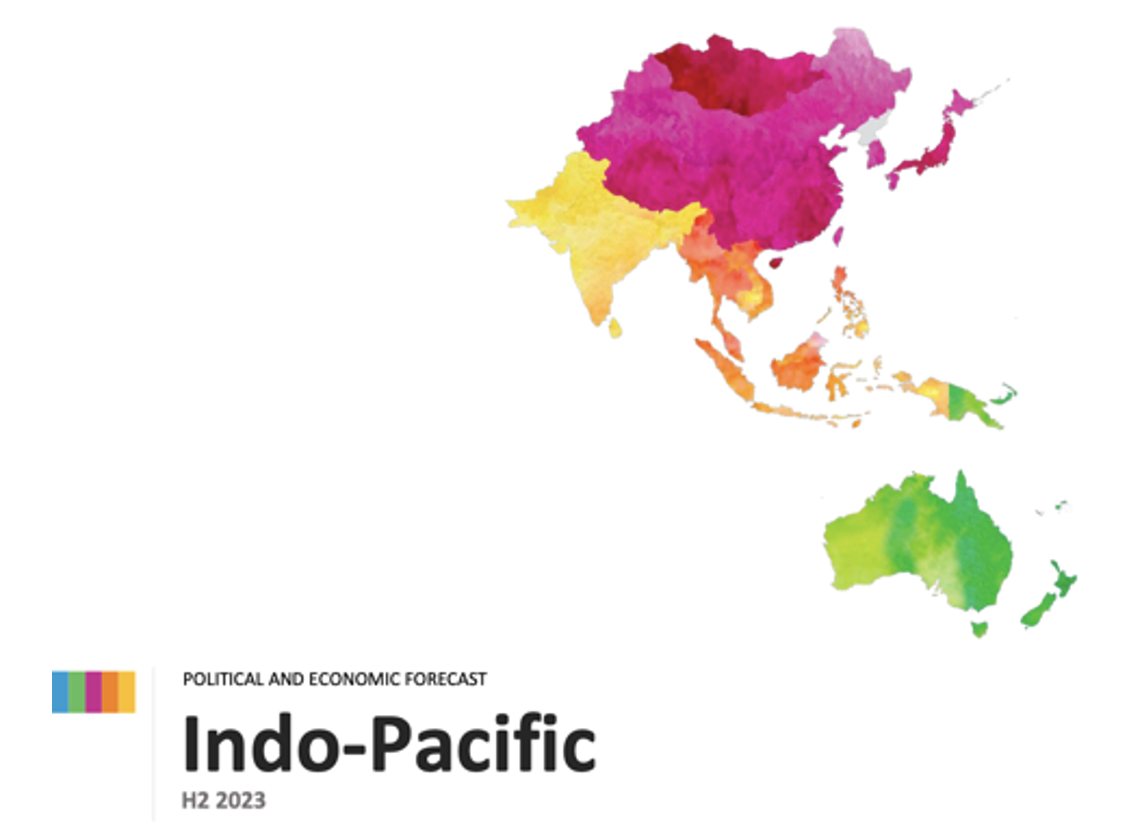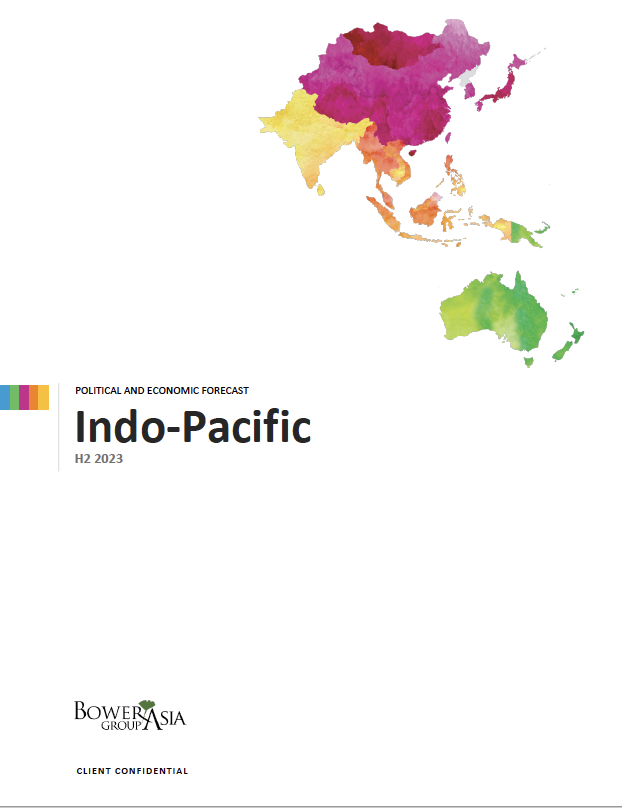
Indo-Pacific Forecast | H2 2023

Below is an introductory letter from BGA President and CEO Ernie Bower on the company’s latest half-yearly regional forecast, circulated to clients and prospects to help inform their planning for the upcoming months.
Dear friends and colleagues,
The first half of 2023 has seen the Indo-Pacific emerge almost entirely from the pandemic and into new geopolitical and economic realities that challenge many previously safe assumptions defining the region. Though Asia is clearly the priority for growth, company leaders are less certain, more focused on risk and placing a premium on anticipating new developments.
That interest in seeing around corners, being aware of context and knowing what signposts to watch is the purpose of this comprehensive report. BGA is pleased to provide this insight to our clients, as it is the foundation on which we engage together and carefully fold in the details critical to you and your business.
With the end of the health emergency, it is important to reflect on how the pandemic touched so many of us personally. At BGA, we think first about the people we work with, both in our clients’ companies and in the myriad departments and entities outside government with whom we cooperate and share information and ideas. Given the reach of BGA’s 220 people working in 28 countries across the region, that is an incredibly impactful sample of Asia’s most powerful and influential decision-makers.
We have all been changed over the past three years. The exuberance of reengaging with the world through travel and human contact has been tempered by the reality that things are still shifting beneath our feet. While this uncertainty can cause us to pause, it also provides fertile ground for innovation.
Economic strategies that paid tremendous dividends in emerging markets are not as relevant as they reach middle-income status, providing opportunities for new players to enter once restricted markets. Partnerships and animosities that seemed ironclad are now rightly questioned for their relevance. Demographic shifts have accelerated, as seen by India overtaking China as the world’s most populous country. Political frameworks that were felt destined to continue for the long term are being questioned by empowered citizenry and new political challengers. As the region turns the page from the pandemic, many narratives that will define the next decade will take shape as we finish this year.
Not halfway through yet, this has been a consequential year already. It has ushered in new governments hungry for policy wins and legitimacy. In Malaysia, Anwar Ibrahim’s ascent to power has opened opportunities for economic reform. In Thailand, a dramatic election has set the stage for a potential reenvisioning of the country’s political and economic frameworks. Upcoming elections in Pakistan and Timor-Leste will relitigate entrenched rivalries that are as much personal as political and revolve around key questions of political economy. With an eye toward next year, the second half of 2023 will prove to be the last practical period for reform and government action ahead of elections in several markets. From now into next year, Bangladesh, India, Indonesia and the United States will see a flurry of action as governments seek to prove their track record as their campaigns begin in earnest.
This political maneuvering takes place against a tumultuous economic background. Forecasts from the international financial institutions augur a shaky recovery. In some instances, the supply chain issues that seized our attention the last two years have eased, and major shifts are underway. Yet the worldwide fight against inflation threatens to eat away at real growth and push the world back into recession. The Indo-Pacific remains a bright spot, growing ahead of 2022 levels while the world’s most developed economies will grow at markedly slower rates. Still, key economies like India, Indonesia, Malaysia, the Philippines, Singapore and Thailand will likely experience a slowdown from last year.
The reopening from the pandemic has resulted in real and measurable improvements in peoples’ lives and economic prospects. Tourism has rebounded, and China’s reopening is an integral part of the region’s economic resurgence and the cross-border flow of goods, services and people. Against the backdrop of ominous geopolitical tensions across the world, stemming from the impact of Russia’s invasion of Ukraine and the persistence of U.S.-China tensions, the restoration of in-person international contact is key to the political and economic prospects for integration in the Indo-Pacific.
Financial developments in the United States beyond the political headlines have had major impacts on the everyday lives of people across our markets. Interest rate hikes, which may soon pause but will not soon abate, have created an international investment economy like that of the early 2000s. Liquidity and uncertainty are restraining spending, even as sectors like tech and energy forge ahead.
For many countries and companies that had grown used to the liberal flow of U.S. dollar investments spurred by the promise of better returns in emerging markets, this has proven a sobering development. From the boardrooms of the world’s largest companies in Silicon Valley to one-bedroom companies in innovative startups in Bengaluru, the new international financial ecosystem has shaken assumptions and demanded hard decisions to survive.
Economic integration continues to hold the key to growth and long-term security in Asia. Important developments to watch in this context include key multilateral agreements. With Brunei’s ratification of the Comprehensive and Progressive Agreement for Trans-Pacific Partnership (CPTPP), the trade pact is now law in all 11 of the original signatory countries, and the United Kingdom is beginning its accession effort. As the United States continues to keep its toe in the water of Asian economic agreements with halting progress in its Indo-Pacific Economic Framework (IPEF), the success of the CPTPP will demonstrate the value of more comprehensive agreements. Finally, the ASEAN leaders’ meeting in Indonesia and the Asia-Pacific Economic Cooperation (APEC) summit in San Francisco later this year should provide opportunities for global businesses to engage with high-level stakeholders.
During an era of paradigm shifts, it is more important than ever to be as close as possible to the action. In this biannual forecast, BGA’s teams on the ground throughout the Indo-Pacific have identified the signposts and nuanced manifestations of these changes. Asia’s people and their dynamism have always been its greatest strengths, and understanding this remains key to unlocking the potential for growth.
I hope you find this report useful. We welcome your feedback and thank you for placing your trust in us.
Sincerely,
Ernest Z. Bower, President and CEO, BowerGroupAsia





















